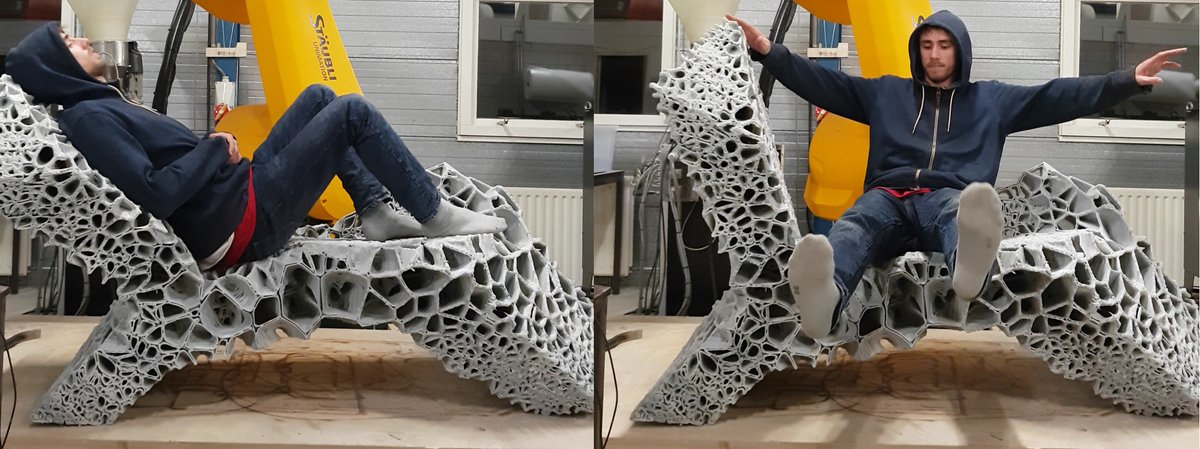Projects
Variable Stiffness
Year: 2017-2018
Project leader: Henriette Bier
Project team: Henriette Bier, Arwin Hidding
Collaborators / Partners: 4TU Bouw, TUE, CPFL, 3D Robot Printing, 010Works
Funding: 50K
Dissemination: DDW2020, Spool CpA 2 (2019), Spool CpA 3 (2020)
Variable stiffness is employed in this project as an adaptation strategy to achieve multi-functionality. The chaise longue can change shape to accommodate functions as both bed and chair depending on users’ requirement. Through numerical and experimental studies employing structural analysis, robotic path simulations, and 3D robotic printing an architected approach to adaptive structures is implemented.The geometry of the Chaise Longue is generated to accommodate an average human body size and weight, within a certain range, either sitting down and/or lying. It allows the user to either sit or lie down by deforming the back part of the chaise-longue when leaning against it. The actuation is implemented by the weight of the user. This shape change is achieved by combining variation in material distribution and use of thermoplastic elastomers (TPE).

